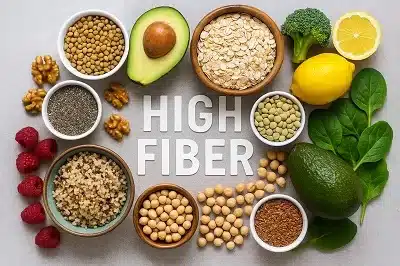There’s a new buzzword making the rounds in wellness circles—and it’s not another gimmicky detox or synthetic supplement. It’s fibermaxxing. The name might sound like a fringe internet challenge, but the principle is legit. It’s about ramping up your daily fiber intake in a focused, strategic way to unlock better digestion, clearer skin, improved blood sugar, and even metabolic flexibility.
But like anything worth doing, there’s a smart way to go about it—and a not-so-smart way. So let’s break down what fibermaxxing is, what it’s good for, and how to do it without wrecking your gut in the process.
What Is Fibermaxxing?
Fibermaxxing is the intentional practice of dramatically increasing your daily fiber intake using whole foods and, in some cases, functional powders. The goal? Support the gut microbiome, enhance digestion, improve insulin sensitivity, and reduce systemic inflammation.
Instead of aiming for the old-school RDA of 25–30 grams of fiber, people who fibermax are pushing beyond 40, 50, even 70 grams per day—some going as high as 100. This isn’t about just eating more vegetables. It’s about stacking fiber-rich foods like chia seeds, lentils, psyllium husk, flaxseed, avocado, green bananas, cooked-and-cooled potatoes, and berries with intent.
Why Fibermaxxing Is Trending Now
We’re finally seeing mainstream awareness of the gut–brain–immune connection. People are realizing that good gut health affects everything from skin clarity to anxiety levels to metabolic performance. And fiber is the fuel that feeds the beneficial microbes that make it all possible.
Fibermaxxing has caught on because it delivers real, tangible results: better bowel movements, more satiety, more stable energy, less bloating, and clearer skin. When your microbiome is thriving, you feel it everywhere.
How Fiber Impacts the Gut (and Beyond)
Soluble fiber turns into a gel-like substance in your gut, slowing digestion and helping stabilize blood sugar. It also gets fermented by bacteria in your colon to produce short-chain fatty acids (like butyrate), which reduce inflammation and protect the gut lining.
Insoluble fiber adds bulk to stool and keeps things moving. A balance of both is ideal, and fibermaxxing typically emphasizes foods that provide both types. The result is a cleaner digestive system, improved nutrient absorption, and better hormonal balance across the board.
How to Fibermaxx Without Destroying Your Gut
Now here’s the warning: if you go from 10 grams of fiber a day to 70 overnight, your gut will rebel. Gas, bloating, cramps, your microbes won’t know what hit them. The key to smart fibermaxxing is gradual progression and hydration.
Start by tracking your current fiber intake. Then increase it by 5–10 grams every few days. Always pair added fiber with more water, aim for half your body weight in ounces per day, minimum.
Another tip? Rotate your sources. Don’t rely on just oats or psyllium. Mix in chia, ground flax, lentils, leafy greens, and fermented vegetables. Diversity breeds microbial strength.
Who Should Fibermaxx?
Most people can benefit from fibermaxxing, especially if they’ve had years of low-fiber, ultra-processed eating. But if you have IBS, IBD, SIBO, or other gut disorders, go slow or work with a practitioner. Fiber feeds good bacteria, but in some cases it also feeds the bad guys until balance is restored.
If you’re already living a primal lifestyle—eating clean, moving daily, and getting quality sleep, fibermaxxing can be a powerful upgrade to everything you’re already doing. Just listen to your body, and adjust as needed.
Final Thoughts: A Tool, Not a Trend
Fibermaxxing isn’t a diet. It’s a tool. Like cold plunges or intermittent fasting, it’s something you can cycle in or out of, depending on your goals. It’s rooted in ancestral wisdom—our primal ancestors likely consumed way more fiber than the modern Western diet provides.
So if you want to improve digestion, reduce inflammation, balance blood sugar, and fuel your microbiome, fibermaxxing might be the missing piece. Just remember: go slow, stay hydrated, and feed your gut what it was built to handle, real, whole, functional food.

